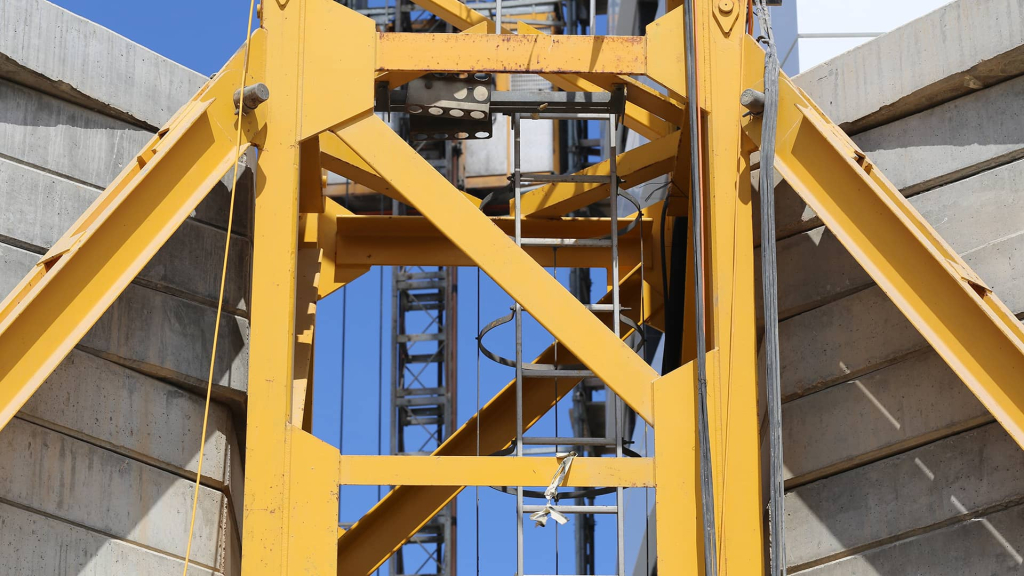Staying Adjudications – when your contractor is becoming insolvent, September 2016
In Hakea Holdings Pty Limited v Denham Constructions Pty Limited; BaptistCare NSW & ACT v Denham Constructions Pty Limited (16 August 2016)1 the Supreme Court of New South Wales stayed the enforcement of an adjudication award because there were significant counterclaims against the contractor and a real risk that the contractor would be wound up and unable to repay the money received – if the counterclaims were successful. The case demonstrates that courts will stay enforcement where there is evidence that the financial circumstances of the contractor mean that it is unlikely to be able to repay the adjudication award and where there are strong and substantial counterclaims, even if the contractor is not actually in liquidation.
Background
The case concerns two applications to stay the enforcement of adjudication determinations under the Building and Construction Industry Security of Payment Act 1999 (NSW) (Act) in favour of Denham Constructions Pty Limited (Denham) in respect of two separate aged care facility projects. The first was an application by Hakea Holdings Pty Limited (Hakea) for an order continuing to restrain Denham from enforcing a determination in Denham’s favour for AUS$1.1 million. The second was an application by BaptistCare NSW & ACT (BaptistCare) for an order staying and restraining the enforcement of a judgement that had been entered in the District Court of New South Wales in respect of a determination in Denham’s favour for AUS$475,000.32.
Both Hakea and BaptistCare asserted substantial counterclaims against Denham well in excess of the adjudication determinations, AUS$6 million and AUS$5.4 million respectively. Both also argued that Denham’s precarious financial position was such that if the determinations were enforced, there was little prospect of ever recovering the amounts paid through subsequent proceedings to enforcing their respective counterclaims.2
In exercising its discretion to grant a stay or continue the injunction the Court was required to balance two competing policies of the Act. The first was that contractors should be paid promptly for work that they have done during the life cycle of the project. The other was that the interim nature of the adjudication process requires that a party’s right to commence separate proceedings to recover amounts paid to the contractor should not be prejudiced. Where a contractor is insolvent and likely to be unable to satisfy a judgement in subsequent proceedings, the principal’s rights will almost certainly be prejudiced. Courts, rightly, take the position that enforcement of an adjudication in these circumstances, effectively converts a temporary adjudication into a final order by reason of the contractor’s financial misfortune.3
In Denham Constructions, the Court set out the following factors to be taken into account when balancing these competing policies:
- The strength of the applicant’s counterclaims.
- Whether the applicants had challenged the adjudication determination and/or the debt.
- The likelihood that the contractor is unable to repay the amount the subject of the determination. The Court accepted that the policy of the Act is generally to place the risk of insolvency on the respondent on an adjudication.
- The risk that the contractor will become insolvent in the future if the stay is granted.
Ball J accepted that each applicant’s counterclaim had reasonable prospects of success and that there was a real risk that Denham would be wound up in the future. He held that this would occur whether or not the amounts currently owed to Denham would be paid. All compelling reasons favouring a stay and the continuation of previous injunctions.
HFW perspective
Contractor insolvency is endemic in the construction industry. One of the policy objectives behind the security of payment (SOP) legislation in Australia and the UK is to stave off sub-contractor insolvencies by maintaining cash flow down the contracting chain during a project. Where it may be too late, because insolvency is imminent or has already occurred, the policy behind the legislation properly yields to the protections afforded to creditors under the Corporations Act 2001 (Cth) (such as the principal’s set-off right under Section 553C).4
The position is different where there is no insolvency process underway in relation to the contractor. Here the overriding assumption, consistent with the policy objectives of the SOP legislation, is that the risk of insolvency at some point in the future is assigned to the principal.5 Courts have required, in some cases, evidence of tactical restructuring on the part of the contractor before granting a stay in such circumstances.6
In Denham Constructions, the contractor had not engaged in such tactics. The contractor was merely in dire financial circumstances. Yet the court granted a stay regardless. While this suggests a softening in the judicial approach to these sorts of issues, the bar remains generally high for a principal. Depending on the strength of the principal’s counterclaim and prejudice likely to be suffered by the contractor if a stay is granted, courts only grant a stay if there is a relatively high likelihood that the contractor will be unable to repay the amount if the principal’s counterclaims are successful.7
The stringent requirement appears to have been met in Denham Constructions. Unlike in cases where the only evidence before the court was that the contractor was a small company with few assets,8 the court in Denham Constructions was presented with fairly compelling evidence of a contractor on the verge of collapse, including a pending winding up application, and significant amounts owing to the Australian Taxation Office (ATO) and secured creditors.
As a postscript to this saga, Denham appears to have gone into administration the day after Ball J handed down judgement.9 This does however raise the question of whether the outcome would have been the same if the evidence at trial was that (but for the stay) Denham would have remained solvent. We think in that situation, the Court would have declined to stay the enforcement of the determinations as to do so would clearly frustrate the object of the Act.10
What this means for you
Contractors commencing adjudication may have to consider whether they have the financial means to repay an amount awarded under an adjudication determination if it is ultimately found (in litigation or arbitration) that there was in fact, no entitlement to the determined amount. If they are not yet insolvent but in difficult financial circumstances, adjudication may not be an option.
Principals wishing to stay the enforcement of adjudication proceedings on the basis that the contractor is in serious financial difficulty need to be prepared to present strong evidence. A mere suspicion will not suffice. In the current uncertain economic climate, this is not likely to be the last word.
Footnotes
- [2016] NSWSC 1120 (16 August 2016) (Ball J) (‘Denham Constructions’).
- Hakea also raised a further argument, ultimately dismissed by the court, that it should not be required to pay the amount set out in the adjudication determination on the basis that Denham failed to provide a subcontractor’s statement verifying payment of all of its subcontractors.
- Grosvenor Constructions (NSW) Pty Ltd (in admin) v Musico (2005) 21 BCL 266, 272 [35] (Einstein J).
- See for example, Hamersley Iron Pty Ltd v James [2015] WASC 10 (16 January 2016) [134]-[144] (Beech J); and Facade Treatment Engineering Ltd v Brookfield Multiplex Constructions Pty Ltd (2015) 294 FLR 141, 159 [77] (Vickery J)
- [2009] 1 Qd R 390, 401 [40]-[41] (Keane JA); see also, Romaldi Constructions Pty Ltd v Adelaide Interior Linings Pty Ltd (No 2) [2013] SASCFC 124 (19 November 2013), [108] (Blue J).
- RJ Neller Building Pty Ltd v Ainsworth [2009] 1 QD R 390, 401 [41] (Keane JA).
- Romaldi Constructions Pty Ltd v Adelaide Interior Linings Pty Ltd (No 2) [2013] SASCFC 124 (19 November 2013) [100] (Blue J).
- Such as in RJ Neller Building Pty Ltd v Ainsworth [2009] 1 QD R 390
- The ASIC Register shows a notification of appointment of administrators filed on 17 August 2016
- This appears implicit from Ball J’s finding that Denham’s insolvency would occur whether or not the amounts currently owed to it would be paid.
Download a PDF version of ‘Staying Adjudications – when your contractor is becoming insolvent, September 2016’









